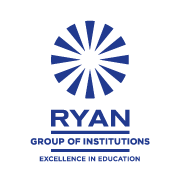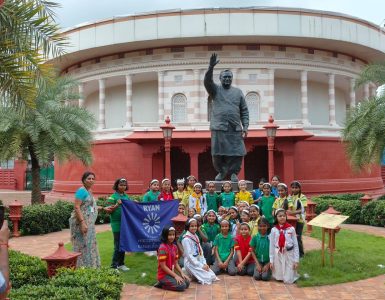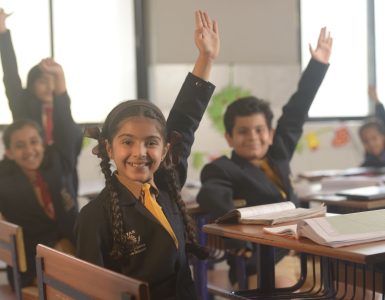When we think of Mindfulness in Children, in education the first thing that comes to mind is often meditation or quiet introspection. However the concept goes further especially when combined with the power of storytelling and literature. These approaches offer an interesting way to introduce mindfulness in settings particularly in a culturally rich and diverse country like ours. In this context storytelling isn’t a form of entertainment but a valuable educational tool that can promote empathy, self awareness and a deeper understanding of others.
Incorporating storytelling & literature into teaching practices aims to tap into humanity’s affinity for stories as a means to teach mindfulness. It’s a strategy that transcends methods by encouraging students to engage with narratives that encompass experiences and perspectives. This technique is particularly impactful in countries like India where a multitude of stories can impart life lessons and foster mindfulness in children.
This approach involves selecting stories that embody mindfulness principles such as being present in the moment recognizing emotions and demonstrating kindness. Educators play an important role, in this process by choosing works that resonate with their students’ backgrounds and experiences while facilitating discussions that connect story themes to mindfulness.
The primary goal of this approach is not to educate students about mindfulness as a concept but to integrate it into their daily learning experiences turning it into something they actively engage with.
This method focuses on application and engagement. It involves selecting narratives that resonate with students’ real life challenges and using them as starting points for discussions on mindfulness in a way that’s relatable and easy to understand. It encourages students to relate to the characters in the stories they encounter promoting an environment where mindfulness is not just taught but put into practice through empathy, active listening and comprehension.
By anchoring mindfulness in storytelling and literature—concrete and familiar mediums—educators can equip students with the skills to approach both their thoughts and external surroundings more consciously. This goes beyond moments of contemplation; it aims to establish a basis of empathy and understanding that students can apply outside the classroom setting.
Exploring the Connection between Storytelling and Mindfulness in Children
What makes stories so effective in teaching mindfulness?
Stories captivate us not because they entertain but also because they have the ability to fully engage us creating a space, for mindful awareness.
Research, in psychology indicates that delving into a story can lead our minds to resonate with the emotions and experiences of the characters. This concept, referred to neural coupling enables listeners or readers to cultivate empathy and mindfulness while immersing themselves in the narratives twists and turns. Stories provide an environment for us to delve into emotions and situations nurturing a deeper insight into ourselves and others.
How does storytelling intersect with literature?

Taking the Indian epic, the Mahabharata as an example beyond its historical and religious importance it presents an array of tales that examine into themes of duty, morality and the complexities of human feelings. When educators incorporate stories from the Mahabharata in teaching, students aren’t merely absorbing facts about figures and events; they are participating in a practice that encourages mindfulness in children. Through this engagement with perspectives within stories students develop an understanding of characters motivations and emotions which fosters empathy and self awareness.
What is the precise impact of storytelling on our brain?
When we listen to or read a story various regions of our brain are stimulated. Not just the areas, for processing language activate but regions linked to experiencing sensations and emotions also light up.
This indicates that stories have the power to truly immerse us in someone’s perspective, enabling us to empathize with their emotions. This plays a role in mindfulness by improving our capacity to be present and understanding of both our feelings and those of others.
Implications for educators
The main lesson here is that integrating storytelling and literature into the curriculum goes beyond boosting reading skills; it serves as a method to nurture empathy and mindfulness in children. By choosing stories that showcase cultures and viewpoints teachers can develop lessons that deeply resonate with students. This not only enhances their journey but also equips them with the emotional and cognitive tools necessary to navigate life more mindfully.
Integrating Mindfulness in Literature Curriculum
Getting started can be as easy as picking stories that naturally address themes of mindfulness like awareness, empathy and emotional control. Educators should seek out narratives that not entertain but also provide opportunities for contemplation and conversations, on concepts. Following a story session teachers can lead discussions prompting students to connect the character’s experiences with their own encouraging reflection on their thoughts and emotions.
So what types of stories should educators seek out? Teachers should strive to incorporate stories that represent a range of cultures and viewpoints those that resonate with the students own heritage and life experiences. This could involve sharing folktales, modern Indian literature or narratives from different parts of the world that offer timeless lessons. The key is to select stories that encourage students to contemplate their connections, with others and explore ways to cultivate mindfulness in their routines.
Activities that complement storytelling for promoting mindfulness in children
One activity involves guided visualization, where post reading a story the teacher leads students in a meditation session prompting them to visualize themselves in the story’s environment or stepping into a characters perspective. Another engaging activity is journaling, where students can reflect on the story and express their thoughts or feelings related to its themes. Both activities foster engagement with the narrative supported mindfulness practices.
Challenges teachers may face & Strategies for overcoming them
One challenge could be ensuring that the stories and discussions are inclusive and captivating for all students regardless of their backgrounds or abilities. To tackle this issue, educators can employ storytelling techniques like picture books or digital platforms, for storytelling to ensure every student can connect with the material.
Furthermore establishing an encouraging classroom setting where students feel at ease sharing their thoughts and emotions is essential.
Purpose of this method for mindfulness in children
The main objective is to utilize storytelling and literature not, for teaching literacy skills but for nurturing a more mindful, empathetic and emotionally intelligent generation of students. By adopting this approach teachers can assist students in gaining an insight into themselves and others providing them with the tools to navigate life’s obstacles with mindfulness and empathy.
Advantages of Storytelling and Literature for Emotional and Social Development

Enhancing comprehension of intricate emotions through stories for fostering mindfulness in children
Stories serve as reflections that portray the intricate structure of human emotions in a manner that is accessible and relatable. When students interact with characters facing challenges, successes and setbacks they are actively learning to recognize and express their emotions instead of just absorbing information. This process plays a role in cultivating intelligence by encouraging students to acknowledge and communicate their feelings in a positive way.
Using literature to promote consciousness among students
Literature serves as a gateway to diverse worlds, beyond students’ immediate surroundings exposing them to cultures, societies and perspectives.
This experience is extremely valuable, for enhancing awareness as it motivates students to recognize and respect differences nurturing empathy and a sense of citizenship. By immersing themselves in narratives from viewpoints students acquire the skills to navigate intricacies with a broader and more compassionate perspective.
The significance of literature in shaping character and instilling values
Literature plays a role in character development by illustrating virtues like compassion, reverence, honesty and resilience through stories. These tales present quandaries and ethical lessons that encourage students to contemplate their beliefs and actions. Through conversations and introspection educators can help students draw parallels between the decisions of characters in stories and their own lives fostering an internalization of these values.
One poignant statement by Maya Angelou resonates;
There is no agony than bearing a story inside you.
This underscores the influence of storytelling—not in the act of narration but also in listening attentively and comprehending deeply. Educators often emphasize the idea that stories possess the ability to alter perspectives build connections between individuals and kindle a passion for learning and understanding.
Key message for parents and educators
The pivotal lesson is that storytelling and literature transcend utilities; they are fundamental, for emotional intelligence and social growth.
By incorporating these aspects into education parents and educators can equip students with the skills to navigate the social challenges of life. It involves creating a rounded learning experience that places importance on intelligence and social awareness alongside academic success preparing students, for the complexities of the real world.
Advantages for teachers
Teachers have noted benefits, not in terms of student behavior and engagement but also in their own teaching methods. Utilizing storytelling and literature has provided them with a tool to address emotional and social issues in a relatable manner. Implementing stories to teach mindfulness revolutionizes the classroom environment. It goes beyond being a teaching technique; it fosters a connection with students.
Suggestions for resources or reading materials
Educators seeking to incorporate storytelling and literature into their mindfulness practices can explore online resources and educational publications. Platforms like StoryWeaver offer an array of stories in languages including those that specifically tackle themes related to mindfulness and empathy. Furthermore books like “Teaching and Teaching Mindfulness” by Deborah Schoeberlein and “The Miracle of Mindfulness” by Thich Nhat Hanh provide insights and practical advice for educators.
Key message for educators to inculcate mindfulness in children
The core message is one of motivation and potential. Incorporating storytelling and literature, into mindfulness education provides an impactful way to promote social learning. By adopting this method teachers can establish awareness and involved learning atmosphere. It presents an opportunity to be creative and motivational utilizing the enduring tradition of storytelling to students for a kind hearted path, in life.




